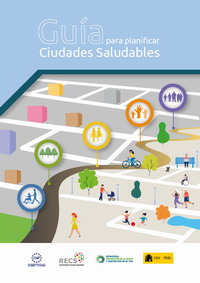The Spanish Ministry of Health has published «Guidelines for Planning Healthy Cities». This document intends to serve as a tool to help people involved in the planning of urban environments at the local level. It provides easy-to-follow guidelines, which can be adapted to any situation, aiming to reduce health inequities. The document includes three lines of work:
- A city designed for walking.
- Introduce green spaces into city neighbourhoods.
- Design spaces for social gatherings and cohabitation.
The document draws from the premise that «promoting healthy lifestyles is complex». Authors highlight the fact that although it may appear to be a matter of individual choices, many external factors influence the choice of behaviours, and therefore focusing exclusively on individual changes is not effective.
It is important to rely on an enabling social and environmental context in which the healthy options are easy to choose: «make the healthy choice the easy choice» (WHO).
These guidelines state that the «development of healthy environments should combine, amongst other factors, sustainable urban development and the promotion of healthy lifestyles through the provision of attractive outdoor spaces, green spaces, enabling networks for active mobility and the access to basic public services». They also outline that «two-thirds of the European population lives in cities and it is estimated that more than 80% will be living in urban areas by 2030», and acknowledge that «the environment in which people live affect their health and the opportunities for development».
Download the document: https://www.sanidad.gob.es/profesionales/saludPublica/prevPromocion/Estrategia/docs/Guia_Planificar_Ciudades_Saludables.pdf




